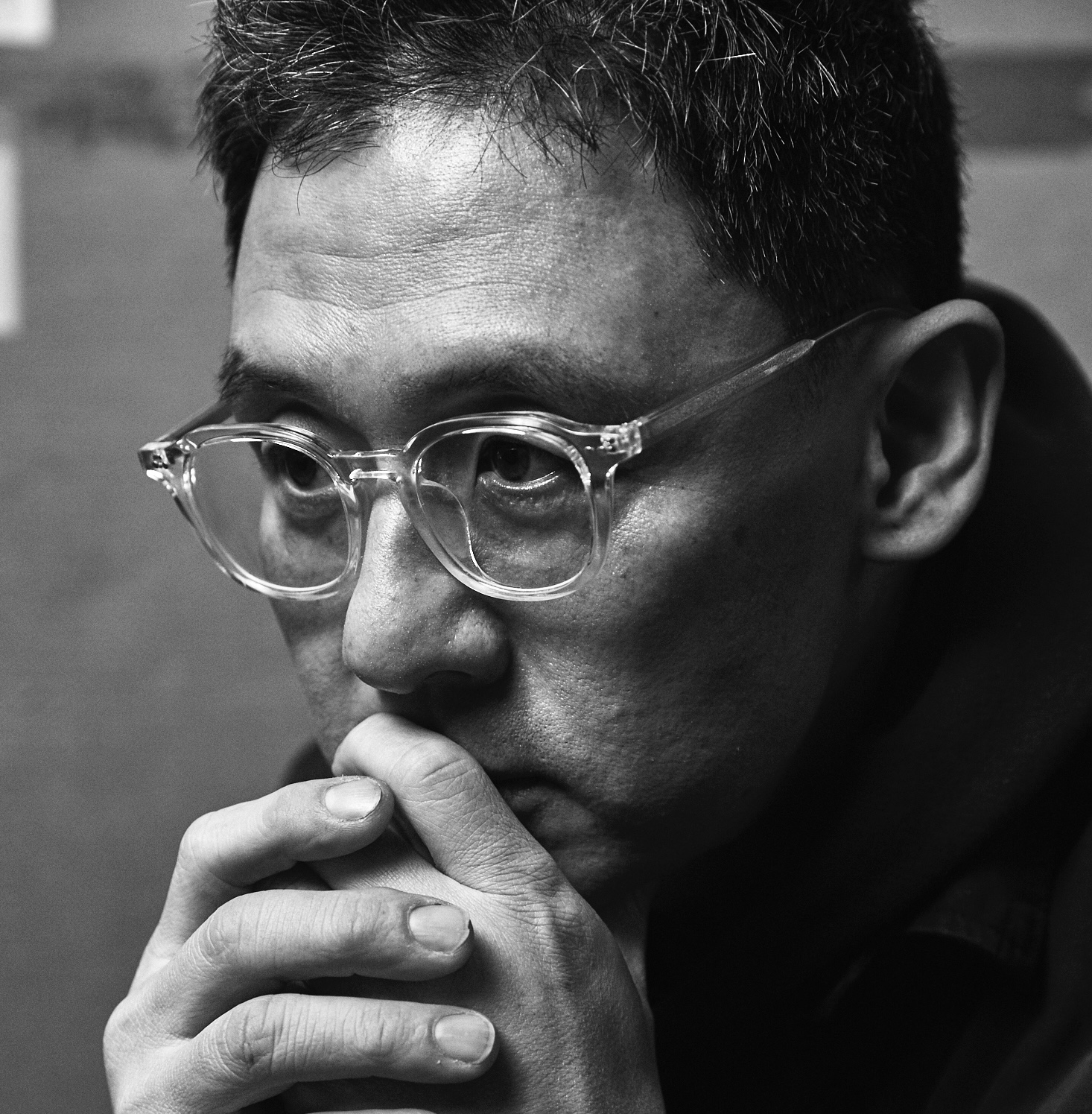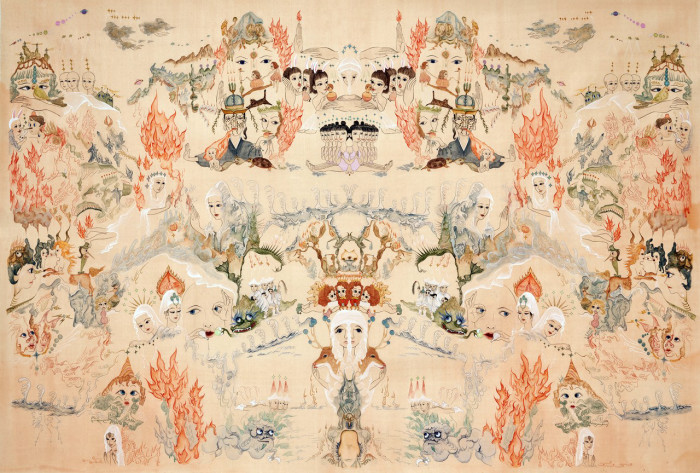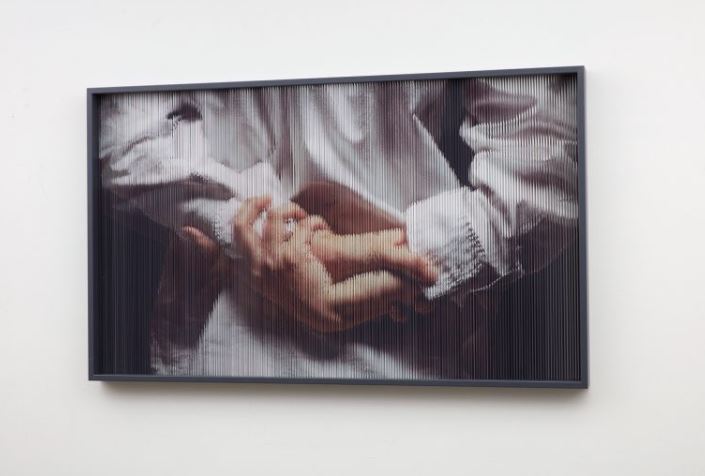The most famous of all notions about man is that Man is a social animal. That is to say, it is a part of human nature to form groups and communities wherever he or she lives and they cannot live without society. Communication is an indispensible tool in building up human relationships in a society. Living in a society where communication fails can be a nightmare to modern people.
That should be a reason why we yearn for clear communication even though that dream is hard to achieve. We find ourselves emotionally wounded and disappointed during the process of communication. However, we cannot stop doing it as far as we live in a society. After realizing that the harder we try the more wounds we get, we hide ourselves in our own world, feeling bitterly lonesome.
The theme running deep in Hong’s works is “communication among beings” in a broad context. So far, Hong tried “communication among beings” based on different subjects and media. His previous interactive works were also aimed at achieving communication. Hong tried to expand the range of communication by adopting various media. This time he made a new attempt. Interactive media arts are nowhere to be seen in the exhibition. Then, What does it mea? he gave up the whole process of communication? Or, he abandoned media as a way of communication? Neither. He rather turned onto more intrinsic and primitive communicating media. Hong shows us disappointing experiences he went through during the process of communicating in a nonchalant manner.
Hong said that he ruled out media he used in the past in this exhibition due to troublesome natures of media. Indeed, it was a sort of hassel for appreciators to understand media arts since those require people to take part in operation in the name of “interaction”. It is true that interactive media arts provide people with great experiences of immersion and involvement, but they also invite unnecessary nuisance and perplexity especially when artworks break down. Actually, it is easy to spot the sign saying “not in operation”, for some reasons, in many media art collections. Those malfunctioning media art piece lost its meaning as an artwork.
In an attempt to spare himself such troubles, Hong returned to an original form of communication: Threads. To Hong, threads mean the point at which basic desires for communication meet, which he felt from misunderstandings and shortage of relations. Threads engage in darning and attaching. Human beings start their social life when disconnected from mother’s umbilical cord at birth.
That disconnection means the beginning point of communication. Hong turns his eyes on such aspect of threads and ropes. He takes pictures of a hand and prints it out on a batch of threads. It is noteworthy that those threads serve as a medium and a hand is an object of image the artist wants to tell us through that medium.
We use five senses to explore unfamiliar outer world. Among them, a tactual sense is involved in a direct and personal approach, unlike a visual sense which creates contemplative distance. The impact tactual sense gives us is so powerful that we came to feel everything by touching them.
We sometimes hold others’ hands to confirm our communication with them, often feeling awkward, though. In Hong’s works, a hand is not a medium, but an object conveyed by a medium. It would be safe to say that the artist portrays himself through the hand. His hands seem to have an insight, so they show feeling of emptiness in a communication-lacked environment. In some of his works, hands are showing different gestures like holding something or sitting still. Interesting is two hands adds to bigger sense of loneliness that one hand.
Two hands cross each other in some pieces and stare different place leaning one’s back against each other in others. A hand in Hong’s works is the artist himself. Hong expresses his personal experience about how difficult communication is in his works. In addition, images of fragmented self are shown in those vague hands. Some works have hands blurred on thread and others have hands put over another. Both of hand on the surface and one behind other hand search for the possibility of communication with others as well as with dissociated oneself. This suggests that communication starts from compromise with oneself.
Putting aside hands, some artworks incorporate a piece of LCD monitor as a medium. What is all about this change in medium, from thread to monitor strips to mirrors. And how can all relations between thread and monitor strips be defined?
Monitor strips reflect external images, which is line with the function of thread-a path to external world. Overall, Hong contemplates possibility for communication using various media. While doing so, he consistently holds onto one effect: mobility. Thread has mobility because it trembles even though it is fixed. Monitor strips also shows mobility by reflecting light. Currently, Hong is conducting tests of various media. Such open-minded attitude over media gives stronger competitive edge to Hong.
During this show, Hong fully focused on two media- thread and monitor strips, but he will tap other media for better communication in the future. In a quest to achieve better communication, he could face agony. Chances are he will show those agony through tested media later since his final destination is “communication”. Like layering of overlapped threads and images in Hong’s works, as agony piles up during a journey to find better communication, we develop tolerance to that pain. Such tolerance will underpin Hong so that he can express communication-induced loneliness through media in the future.






















